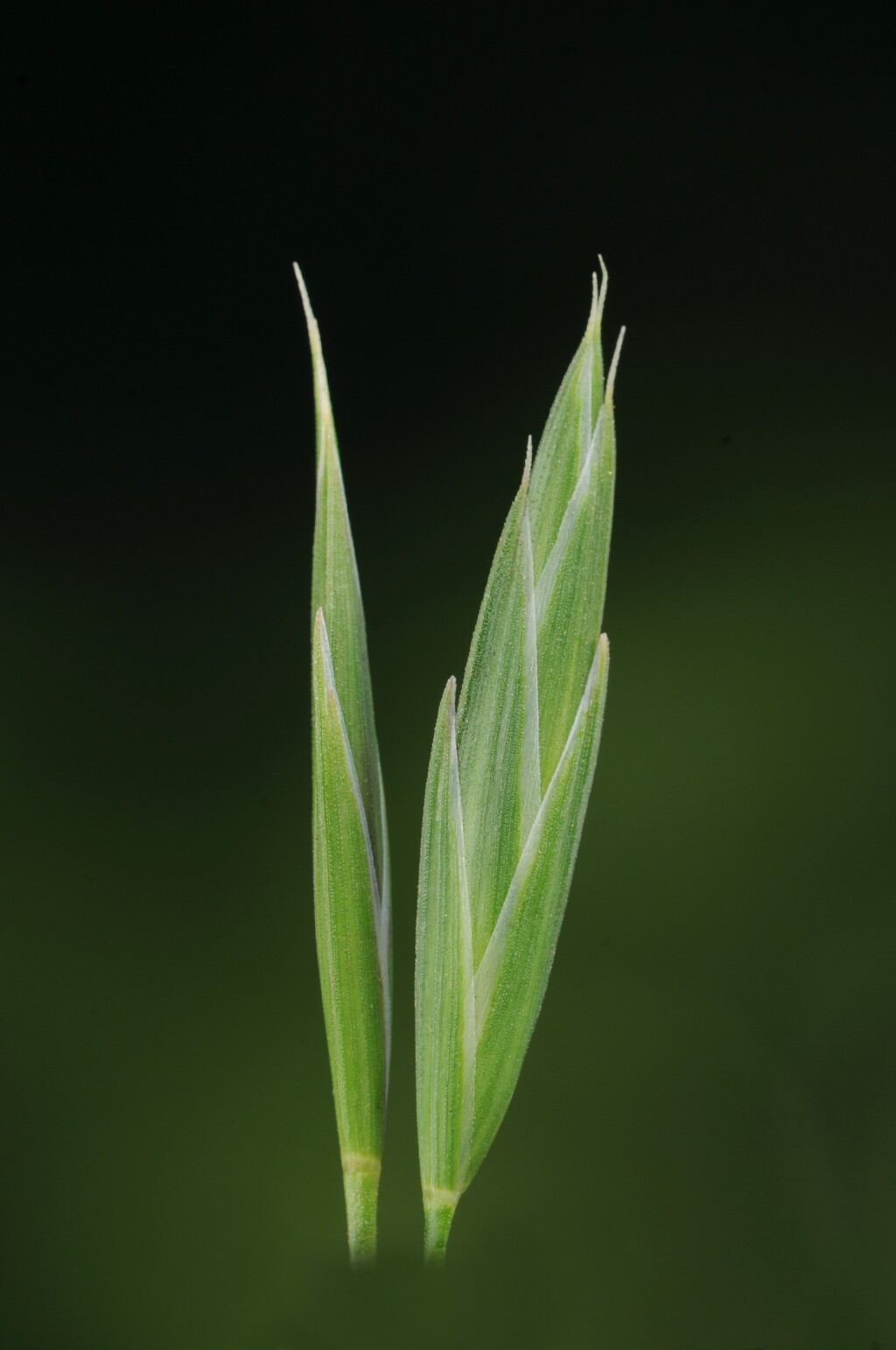Bromus catharticus
J.Vahl Prairie GrassTufted annual, biennial or perennial, culms erect, to 120 cm high. Leaves glabrous to pilose; blade loosely folded, to 45 cm long and 15 mm wide, scabrous; ligule glabrous, truncate, 1–5 mm long. Inflorescence a panicle to 40 cm long. Spikelets compact, 4–9-flowered, lanceolate to oblong, 10–40 mm long; with florets strongly imbricate and usually strongy laterally compressed; lower glume 3–7-nerved, 8–15 mm long, upper glume (5–)7–9-nerved, 10–18 mm long; lemma 8–24 mm long, including awn, if present, to 10 mm long, strongly keeled, scabrous along keel.
LoM, MuM, Wim, GleP, Brid, VVP, VRiv, RobP, MuF, GipP, OtP, WaP, Gold, CVU, GGr, DunT, NIS, EGL, EGU, WPro, HSF, HNF, OtR, Strz, MonT, VAlp.
The taxonomy of this group is difficult and has resulted in many misapplications of names. Three varieties are recognised, all occurring in Victoria. Variety catharticus is by far the commonest in Victoria.
Walsh, N.G. (1994). Poaceae. In: Walsh, N.G.; Entwisle, T.J., Flora of Victoria Vol. 2, Ferns and Allied Plants, Conifers and Monocotyledons, pp. 356–627. Inkata Press, Melbourne.
 Spinning
Spinning




